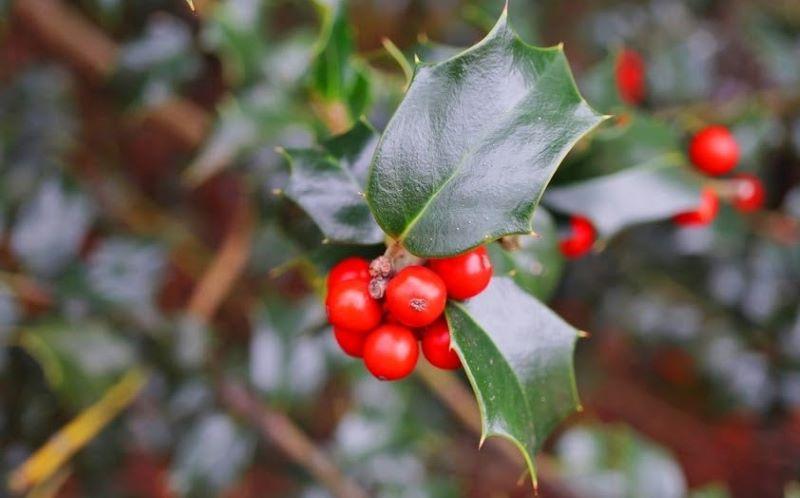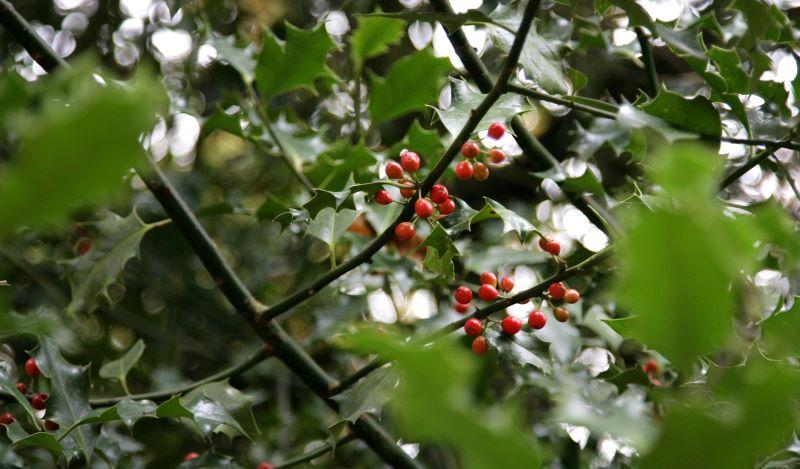
Holly tree - not just for Christmas
With Christmas fast approaching, there’s no more festive foliage than that of the holly tree. However, holly is not just for Christmas, it’s one of the most benevolent and valuable trees in the Forest.
Helpful holly
Despite its prickly leaves, usually found on the lower branches to deter unwanted guests, holly is an invaluable woodland asset. Providing dense cover for nesting birds, its dry leaf litter is a favourite material for hibernating hedgehogs and small mammals. Robins, waxwings and jays vie with squirrels, dormice and deer for the vivid red berries, which provide an important survival food in the depths of winter.
Holly leaves have a high calorific value and were once used as fodder for cattle or sheep when food was in short supply. The leaves are also eaten by the caterpillars of the holly blue butterfly, along with those of various moths including the yellow-barred brindle, double-striped pug and the holly tortrix.
Holly is dioecious, meaning that male and female flowers occur on different trees. The white flowers bloom any time between early spring and the beginning of summer, depending on the climate. The flowers provide nectar and pollen for bees and other pollinating insects. Once pollinated, the female flowers develop into the familiar scarlet berries which can remain on the tree throughout winter.

An ancient history
Long before the Victorians introduced the firs that we now know as ‘Christmas trees’, holly provided the traditional decorative greenery of the season. In pre-Christian times evergreen leaves were placed at the entrance of a house and were thought to stop evil forces from entering. In the Roman festival of Saturnalia, holly branches were used to symbolise ‘good wishes’, while Christians saw them as a symbol of Christ’s ‘crown of thorns’.
Holly was also used extensively for hedging in gardens as it is both impenetrable and durable. Holly wood was used in joinery, the manufacture of mathematical instruments, wood engraving and veneering. When dyed black, it was sometimes used as a substitute for ebony on the handles of tea pots or in making whip handles and walking sticks.
Winter weather forecaster?
In folklore it was said that if holly trees were bursting with bright red berries during November then this was a sign of a hard winter to come. Of course, this actually depends on the insects being available to pollinate the flowers earlier in the year, and warmth in early autumn to help the berries ripen.
The last time the berries were particularly plump and abundant was in 2009 and the winter that followed was the coldest for 30 years, so perhaps only a true sceptic should discount the theory!
See holly in the Forest
If you’re walking in the Forest this winter, then Giddings Wood is a good place to see the vibrant red berries. Find out more about our woodland walks.



